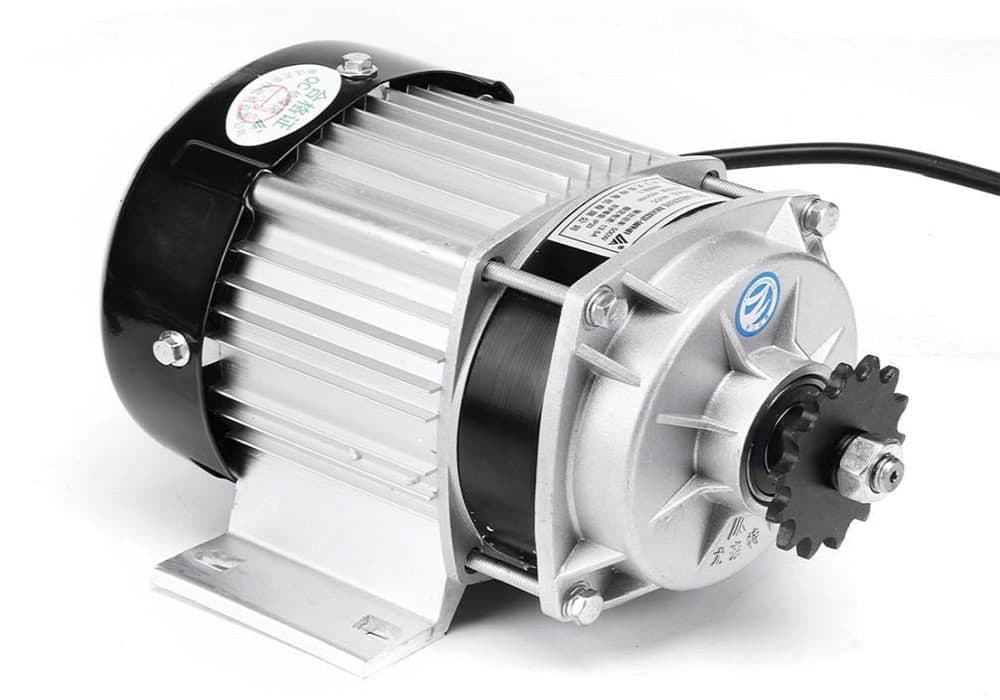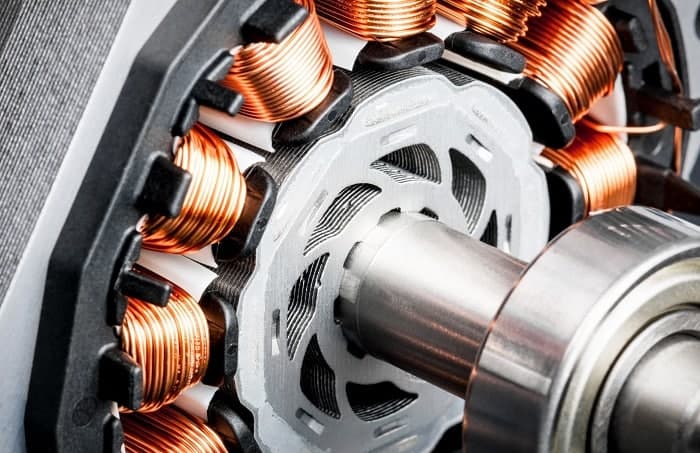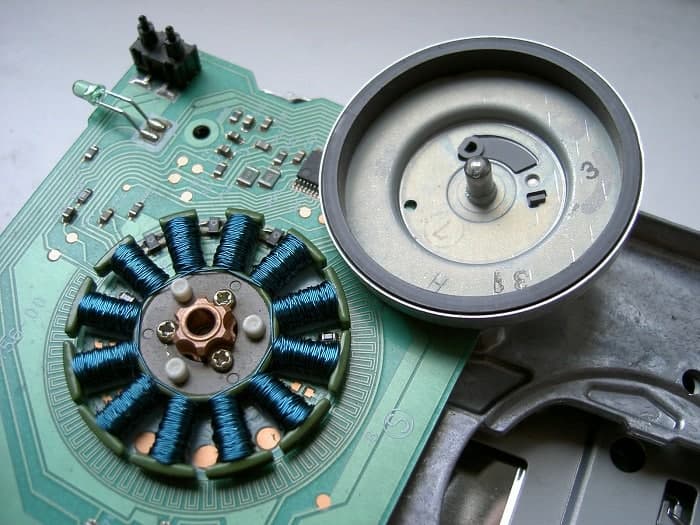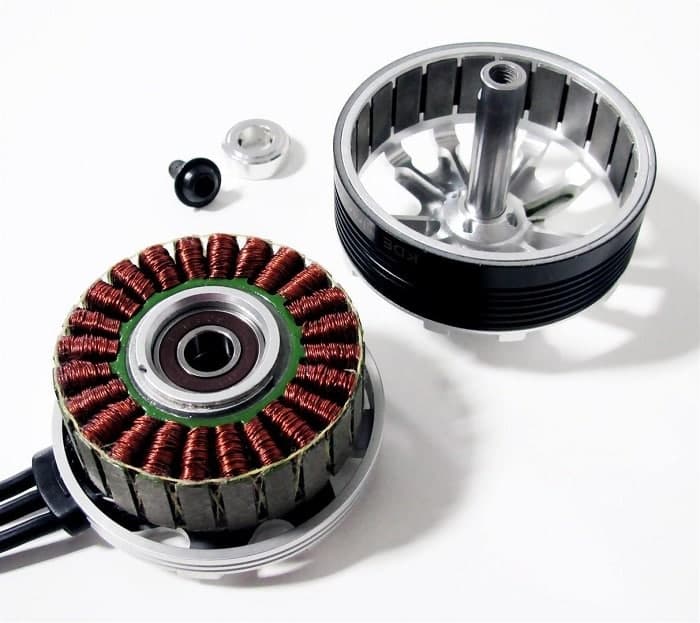(Welcome to Linquip Blog. Here is another definitive article about another engineering and electronics Device. Today we want to give you some useful data about Brushless DC Motors. The question is “How Does a Brushless Motor Work?”. To answer this question, firstly we need to have a definition of Brushless Motors.
In the next step, we will tell you about the working principle on a brushless motor by explaining the working principle of a brushed motor. In the following section, to establish a better understanding of brushless DC motors, we will put the brushed vs. brushless and mention some of the most important pros and cons. And finally, we reach the last part where we will talk about the applications of brushless motors.
Our team gathered all the necessary information about this device to eliminate the need for reading diverse content on other websites. Stay with us until the end to find the answer to your question on this topic. Let us start with some basic definitions at the beginning.
What Is a Brushless Motor?
To reach the answer to the question “how does a brushless motor work?” we need to know what it is and for what purpose it has been designed. So, let’s get into it very briefly.
Brushless DC motors are used commonly wherever you think especially in industrial applications. If we want to deal with the topic of electric motors in more detail, we must say that at the most basic level, there are brushed and brushless motors and there are DC and AC motors. As the name implies, brushless DC motors do not contain brushes and use a direct current.
Brushless motors provide many specific advantages over other types of electrical motors that we will elaborate on in the following sections. But going beyond the basics How does a brushless motor work and what’s it used for?
What Principle Is a Brushless DC Motor Working on?
Since brushed motors were built long before brushless motors and have been used in various areas and fields for a long time, it is better to start with the structure and design of brushed motors to understand how brushless motors work.
A brushed DC motor possesses permanent magnets on the outside of its structure, with a spinning armature on the inside. The permanent magnets, which are stationary on the outside, are called the stator. The armature, which rotates and contains an electromagnet, is called the rotor. So far so easy.
In a brushed DC motor, when an electric current is run to the armature the rotor spins 180-degrees. To go any further and make the motor work continuously, the poles of the electromagnet must flip. The brushes, as the rotor spins, make contact with the stator, flipping the magnetic field and allowing the rotor to spin a full 360-degrees.
A brushless DC motor is essentially another version of a brushed one but flipped inside out, eliminating the need for brushes to flip the electromagnetic field. In brushless DC motors, the permanent magnets are on the rotor, and the electromagnets are on the stator. A computer then charges the electromagnets in the stator to rotate the rotor a full 360-degrees.
How Does a Brushless and Brushed DC Motor Differ?
In the previous section, we got somehow the answer to the question “how does a brushless motor work?” in the following section, we intend to focus on the differences between brushed and brushless motors to make a more vivid image of brushless motors for you.
As we mentioned before, in a typical DC motor there are permanent magnets on the outside and a rotating part or armature on the inside. The permanent magnets are stationary, called the stator. The armature spinning is called the rotor.
The armature contains an electromagnet. as electricity is run into this electromagnet, it creates a magnetic field in the armature that attracts and repels the opposite poles of magnets in the stator. So, the armature spins through 180 degrees, and the motor, to keep it spinning, has to change the poles of the electromagnet. The brushes handle this change in polarity. They make contact with two spinning electrodes attached to the armature and flip the magnetic polarity of the electromagnet as it spins.
This structure works simply and the whole thing is cheap to manufacture. However, it has a lot of problems that we will list below:
- The brushes wear out over time and lose their effectiveness.
- The brushes themselves are a limitation for the speed of the motor.
- Having the electromagnet in the center of the motor makes it harder to cool.
- The use of brushes puts a limit on how many poles the armature can have.
With the advent of cheap computers and power transistors, turning the motor inside out became possible. This transformation eliminates the brushes. In a brushless DC motor (BLDC), you put the permanent magnets on the rotor and you move the electromagnets to the stator. Then you use a computer connected to high-power transistors to charge up the electromagnets as the shaft turns. This system has many strengths compared to the previous structure, which we list below:
- It is more precise as a computer controls the motor instead of mechanical brushes. The computer can also take the motor speed into the equation that brings more efficiency.
- There is no sparking and the electrical noises are reduced to the least.
- There are no brushes and it means one less piece that makes it more durable.
- This structure with the electromagnets on the stator is very easy to cool.
- You can have a lot of electromagnets on the stator for more precise control.
The only disadvantage of a brushless motor that we can mention is its higher initial cost. That initial cost can be recovered through the greater efficiency over the life of the motor.
What are Brushless DC Motors Used For?
In the previous section, we mentioned some of the disadvantages of brushed and the advantages of brushless motor. In this section, we will talk about the efficiency of these two types and bring evidence about why brushless motors have become more popular and are used more commonly in different areas.
Brushless DC motors typically have an efficiency of 85-90%, while this amount is 75-80% for brushed motors. Brushes eventually wear out and sometimes causing dangerous sparking, limiting the lifespan of a brushed motor. Brushless DC motors are quieter, lighter, and have much longer lifespans. Because computers control the electrical current, brushless DC motors can achieve much more precise motion control even at higher speeds.
Because of all these advantages, brushless motors are often used in modern devices where low noise and low heat are required, especially in machines that run continuously. This may include washing machines, air conditioners, and other electrical devices. They may even be the main power source for service robots, which will require very careful control of force for safety reasons.
Brushless motors provide several distinct advantages over other types of electric motors, which is why they’ve made their way into so many household items and maybe a major factor in the growth of service robots inside and outside of the industrial sector.
Conclusion
In this article, we tried to give you all the essential and comprehensive information to get the answer to the question “how does a brushless motor work?”. we brought the basic definitions. Then, we moved to the working principle that brushless motors are based upon.
Next stage, we talked about the major differences between brushed and brushless motors and deliver some of the advantages and disadvantages to make the understanding of the topic easier. In the final section, we talked about why brushless motors are used more commonly everywhere. All we did in this article was an attempt to make it easier for you to understand how a brushless DC motor works.
If you have any experience of using different types of brushless motors and know more about them, we will be very glad to have your opinions in the comments on our website Linquip. Moreover, if you have any questions about this topic, you can sign up on our website and wait for our experts to answer your questions. Hope you enjoyed reading this article.







Nice information. Thanks to your team
Brushless DC motors are ideal for electric vehicles
Thanks Matthew for visiting our website! You are also encourage to visit our other related blog posts.